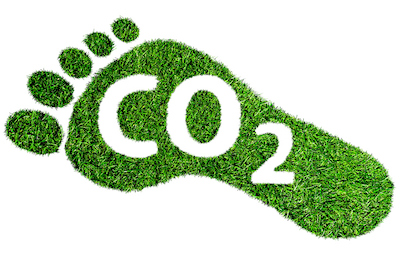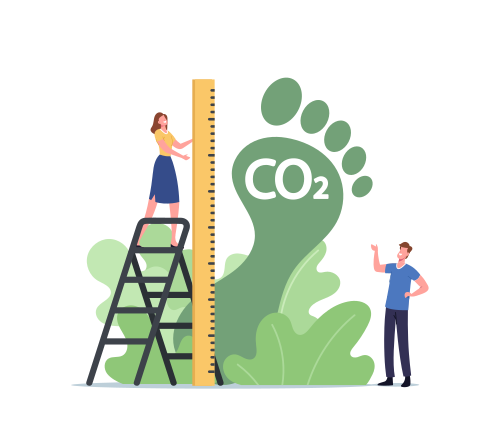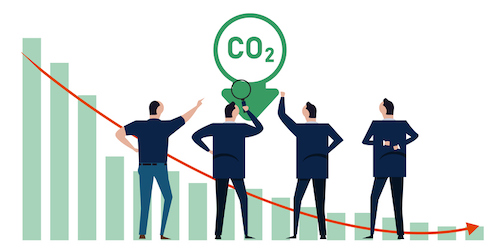
Climate change is a pressing issue, and most businesses are having to think seriously about their response to it. It is becoming increasingly important for businesses to record and manage their own emissions of greenhouse gases (GHGs) and to take steps to reduce them over the coming years. Whether it is to meet the requirements of the EU’s Carbon Border Adjustment Mechanism (currently somewhat up in the air, but unlikely to go away), to satisfy stakeholders and customers, or simply to be a better corporate citizen, most businesses are going to have to take steps to report their own emissions, and how they intend to bring them down over the coming years.
The GHG Protocol Corporate Accounting and Reporting Standard defines 3 ‘scopes’ of GHG emissions for reporting purposes.
Scopes 1 and 2 are carefully defined in the protocol to avoid double-counting of the same emissions by different organisations. However, it will readily be seen that Scope 3 emissions necessarily do incur double-counting as one organisation’s indirect emissions will typically also be the direct emissions of another organisation or individual. The GHG protocol states that: “Companies shall separately account for and report on scopes 1 and 2 at a minimum”. It might also be useful for businesses to track at least some Scope 3 emissions - particularly those that can be affected by the choices of the company, such as those associated with shipping goods to end customers (if a third party carrier is used).

For smaller businesses that want to take their emissions seriously, the big question is how to get started. In this, it is useful to consider both the means of identifying and quantifying the sources of emissions, and the tool(s) used to record, report and forecast them. An army of specialist companies, as well as the mainstream management consultancies, offer their services to businesses to help quantify emissions. Frequently, they will also offer software to help their clients to record and track their emissions over time. However, for many small to medium-sized businesses, this is unlikely to be cost-effective or even necessary as their emissions should be relatively straightforward to quantify.
The main sources of Scope 1 emissions outlined by the protocol are:
For many businesses, their primary sources of Scope 1 emissions are likely to be their own heating (of offices and other workplaces) and transportation of materials, products etc. in company vehicles. Transportation by third parties is counted under Scope 3, unless the company exercises operational control. For these businesses, the calculation is not particularly difficult, as it just requires the recording of fuel purchases (e.g. heating oil, natural gas and vehicle fuels) and the calculation of associated emissions using published emission factors.
Similarly, for Scope 2 emissions, the primary need is simply to record purchases of electricity, and ideally to track the published carbon intensity of your supplier.
For the purposes of this post, we will put Scope 3 emissions to one side for the time being, as it is worth focusing on Scopes 1 and 2 first.
The second question is how best to calculate and report these numbers - and ideally how to incorporate emissions into forecasts, so that the company can begin to plot a course to net zero.

Although there are specific software tools on the market for recording GHG emissions, for most small and medium-sized businesses, the initial instinct will be to reach for a spreadsheet. Indeed, that approach can work well, up to an extent: both for calculating today’s emissions and to plot a rough path through to net zero.
For smaller businesses, a spreadsheet can be used to calculate current emissions, based primarily on purchases of fuel and electricity. However, if the organisation wants to go further - whether by allocating those emissions differentially to products, processes and organisational units, or by incorporating GHG emissions into its planning processes, then a spreadsheet will quickly reach its limits. Any point-in-time calculation of the carbon footprint of each product will be unresponsive to decisions that the company might take in future to reduce carbon intensity. Also, it will require further work every time a new product line is introduced. To keep the calculations up to date, it is necessary to incorporate the drivers of carbon intensity, which generally requires considerably more detail.
What is needed is a planning and reporting approach integrates GHG emissions with general business planning and reporting and can incorporate the actual drivers of GHG emissions. This is where Compas comes in.
Compas adopts a multi-layer approach to data modelling. In simple terms, this means that items can be defined and calculated at the level of detail that makes most sense. Rather than forcing businesses to calculate a CO2 footprint for every product, for example, Compas can be tailored to build a complete model of the organisation, so that inputs of ‘real world’ items like fuel bills, electricity consumption etc. can be entered and used to calculate a total carbon footprint for the business. If desired, drivers can be associated with specific products or processes, allowing the system to allocate carbon emissions differentially between products and business processes. For example, some products might require refrigeration, whilst others do not, or might require more processing time and hence receive a higher allocation of heating and/or power usage.
This level of detail also means that the system can distinguish between fixed and variable types of emission, allowing it to reallocate fixed elements across products as the business scales . Future changes e.g. in the carbon intensity of bought-in electricity, can be entered too, where these are known or can be estimated.
Compas’s multi-dimensional calculation engine then combines all the various inputs and calculates detailed forecasts of emissions along with its other outputs, as well as reporting these against corporate targets. As with other data, actual numbers (e.g. from electricity bills) can be combined with planned or estimated figures to give a ‘best estimate’ that is robust and supported by data. As well as creating detailed short-term forecasting, Compas can also be used to build higher level summary forecasts for the medium and longer term.
To understand more about how Compas can help you to manage and report your greenhouse gas emissions, contact us now for a free demonstration.